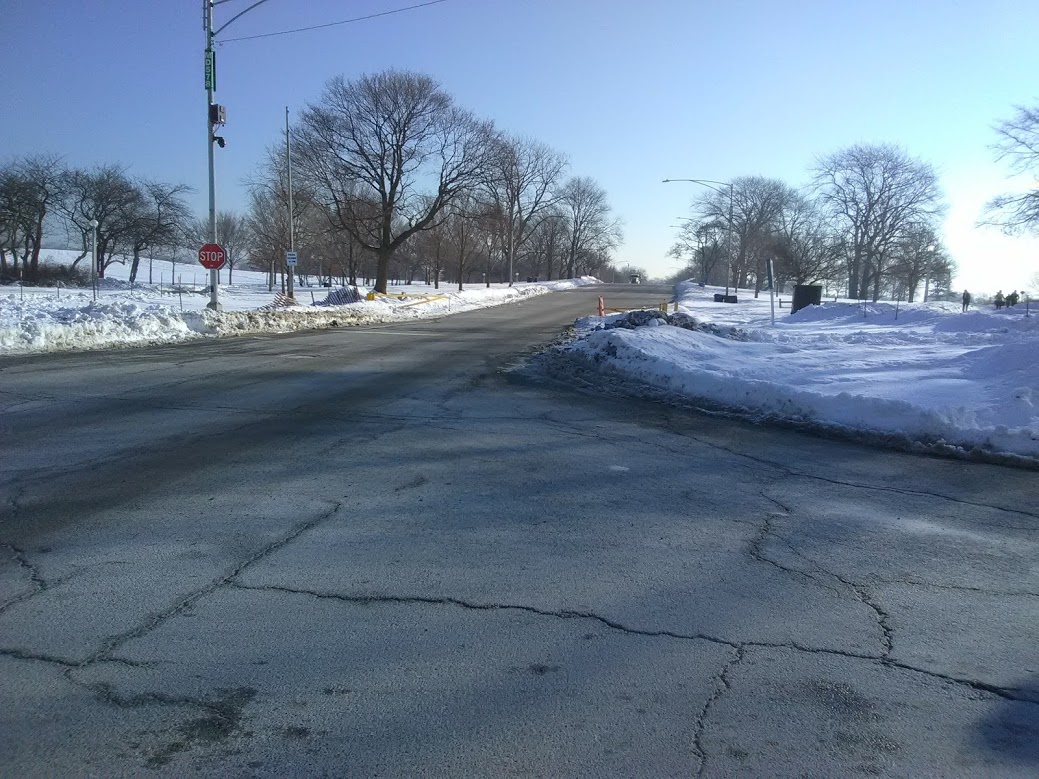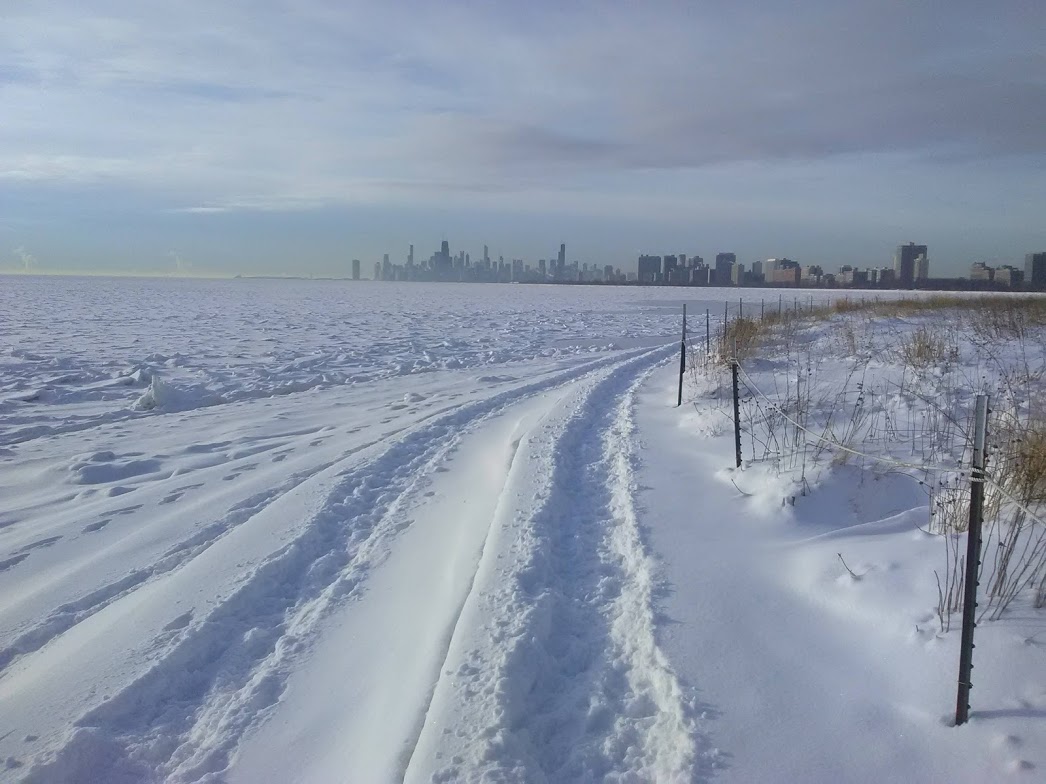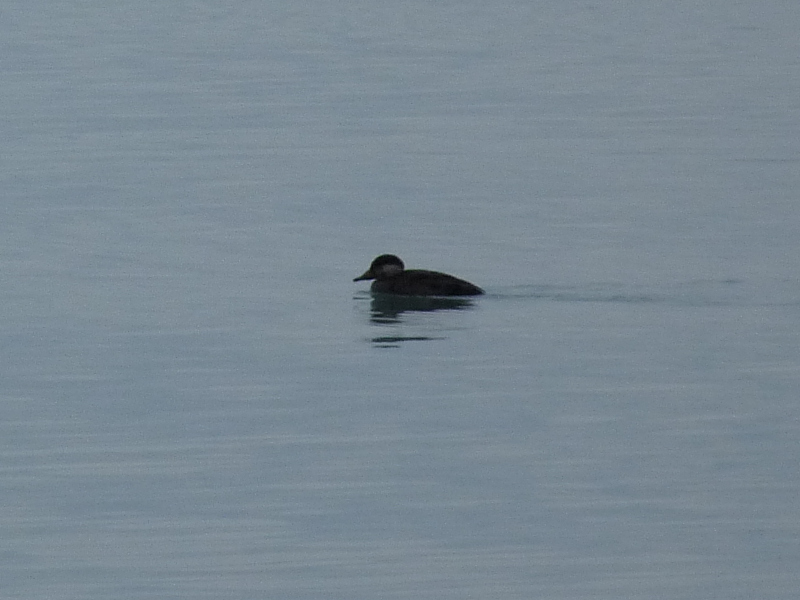In late February 2021, Chicago opened its lakefront parks after being closed for almost a year. This includes Montrose Point. Visitors can now drive in and legally park along West Montrose Harbor Drive or West Montrose Avenue. See the Montrose FAQ page for more information.
Monthly Archives: February 2021
Montrose Brant Followup
The Brant that delighted birders in January at Montrose made its way to Lafayette, Indiana in February. Unfortunately, the bird was struck and killed by a car on February 14. The specimen will go to the Purdue University ornithology collection.
February 17, 2021 – Frozen
I walked over to Montrose on February 17 and it looked like the Arctic. Lake Michigan was frozen over with thick ice north to south and east all the way to the horizon. Deep snow made walking challenging. I felt like Jeremiah Johnson, trudging through the snow with my gear. The last time I can remember Lake Michigan being so frozen was during the brutal winter of 2013/2014 when 93% of the surface was covered in ice by early March. According to NOAA, current ice coverage on Lake Michigan is 27%, so most of this ice is along the shore.
Birds were sparse. I ended up with a whopping 16 species, one of my lowest totals this winter. Best were continuing White-crowned and Swamp Sparrows that have managed to hang on despite the snow and cold. More interesting to me were a group of American Crows eating sumac berries. Sumac berries are considered a low-quailty fruit; most wildlife avoid consuming them unless they’re really desperate.
The good news is that temps are supposed to warm up above freezing by next week, which should start melting all the snow and ice.
Link to my eBird checklist for the morning below.
eBird Checklist
February 17, 2021
Open Water Means Life
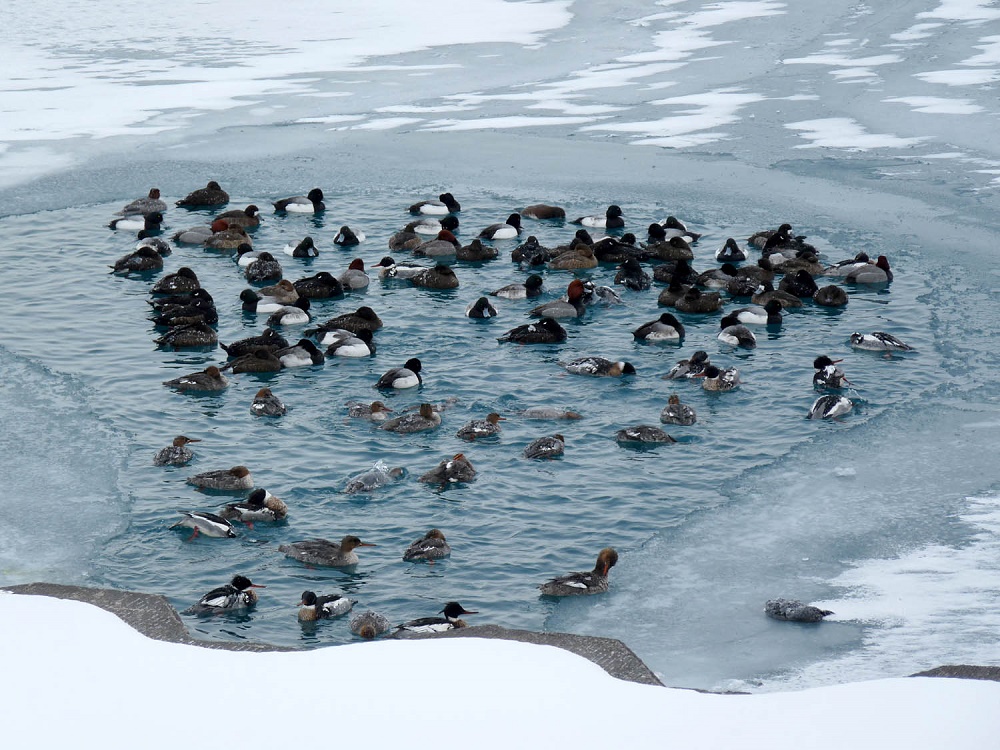
White-winged Scoters, Red-breasted Mergansers, and Greater Scaup. March 2014. (click to see the larger version)
Lake Michigan is a huge body of water. At 300 miles long and almost 120 miles at its widest, it’s rightly considered an inland sea as much as a large lake. In winter, Lake Michigan supports tens if not hundreds of thousands of waterfowl. Most are Common and Red-breasted Mergansers, Common Goldeneye, Long-tailed Ducks, and Greater Scaup. Any open area of water on the Lake will host at least a few of these species in winter. These birds depend on the Lake for food. As long as they have access to open water they can hunt for fish, crustaceans, and mollusks and survive the worst that winter has to offer. They’re all resilient birds. Lake Michigan has never completely frozen over, but it’s come close. The winter of 2013/2014 was especially cold and saw a 93% peak ice coverage in early March. The stress this puts on the birds that depend on having open water is enormous. Some don’t make it. I remember the winter of 2013/2014. In early March, Lake Michigan was frozen to the horizon at Montrose Point in Chicago, with a tiny open spot off the southeast point. In this open spot were a group of Greater Scaup, White-winged Scoters, and Red-breasted Mergansers, all desperate and trying frantically to survive. The only thing keeping the water from freezing was their paddling and movement. I found several dead ducks, some frozen on the ice, and a few even on land. This is a reminder of how harsh nature can be, and what happens when a resource becomes unavailable to large numbers of birds.
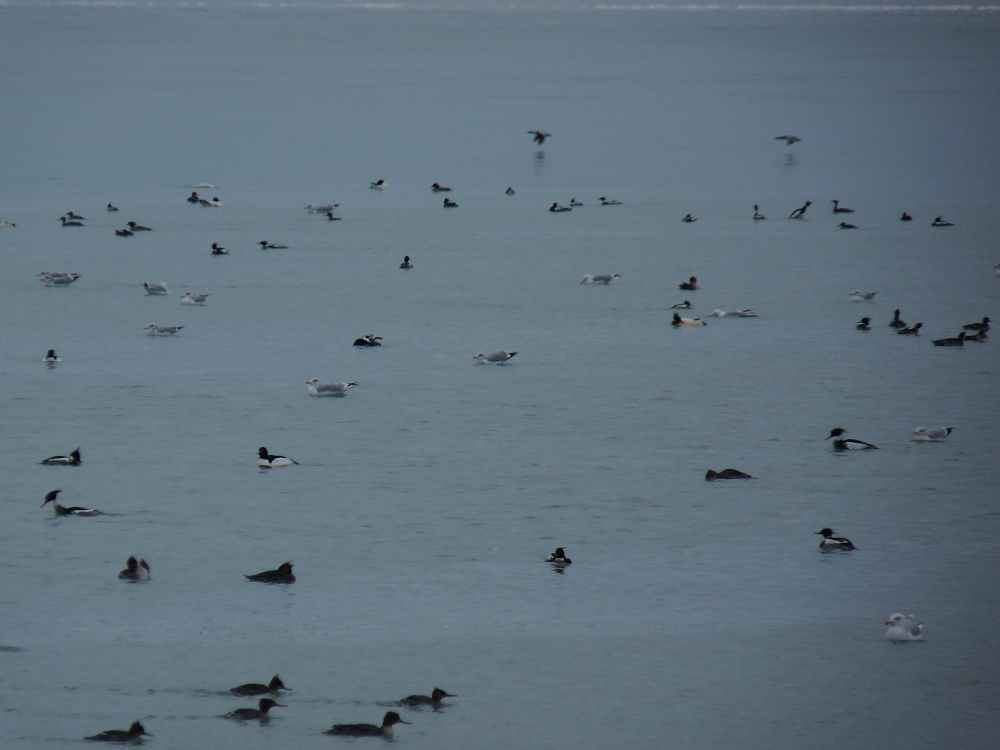
Red-breasted and Common Mergansers and Herring Gulls. February 2021. (click to see the larger version)
As I write this post in mid-February 2021, Chicago is experiencing a stretch of unseasonably cold late winter weather. Most of Lake Michigan at Montrose is frozen to the horizon, with small areas of open water at the harbor mouth and off the fishing pier. From a birding point of view, checking these open areas is worthwhile since they tend to attract and concentrate ducks and gulls. In addition to the expected Common and Red-breasted Mergansers and Common Goldeneye, we’ve seen Long-tailed Duck and Black Scoter. According to NOAA, Lake Michigan has about 27% ice coverage, a far cry from 93% in 2014. If the unseasonably cold weather persists, the 27% will no doubt increase.
February 10, 2021 – Waterfowl and Gulls
I walked over to Montrose on February 10, the first time I’ve been there since the polar air and bitter temps set in a week ago. Not surprisingly, Lake Michigan was mostly frozen, though an area of open water extended from the harbor mouth and along the shore up to the fishing pier. Hundreds of waterfowl and gulls were here, mostly Red-breasted and Common Mergansers, Common Goldeneye, and Herring Gulls. Best were a female type Black Scoter, a female Long-tailed Duck, seven Iceland Gulls, and a first cycle Lesser Black-backed Gull. A frozen Lake Michigan concentrates waterfowl in the remaining open water; these conditions are great for birding but admittedly hard on the birds. More photos are at my eBird checklist for the morning, URL below.
eBird Checklist
February 10, 2021
Probability and Birding
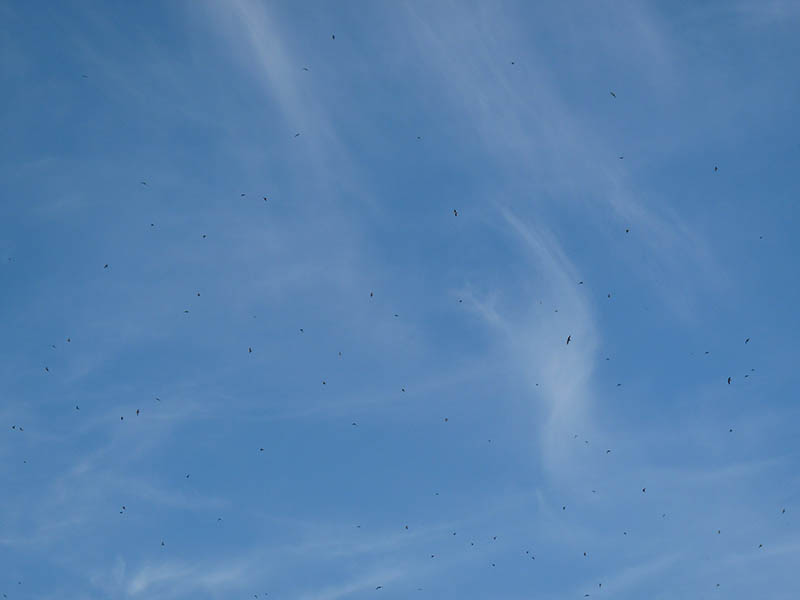
Migrant Chimney Swifts swarming over Montrose Point in Chicago, September 2015 (click to see the larger version)
Probability plays a big part in birding. By probability, I mean using history and what’s expected to aid identification. A good example is identifying swifts. If you see a swift in Chicago, chances are overwhelming it’s a Chimney Swift, the common and regular swift in the Midwest. You don’t have to scrutinize field marks to know, with a high degree of certainty, that a swift in Illinois will be a Chimney Swift. In fact, Chimney Swift is the only swift we see in Illinois – there are no verified records of other swifts in the state as of 2021. Where probability falls short and becomes problematic is if other possibilities for occurrence exist. Chimney Swift may be the only swift recorded in Illinois, but it’s not the only swift species recorded in the Midwest or eastern United States. A check of eBird reveals a handful of records of four other swifts in the United States east of the Mississippi River – Vaux’s, Black, White-throated, and White-collared. If you relied solely on probability for swift identification you could miss something unexpected. Swifts are strong-flying, migratory birds, and the number of vagrant species that have shown up far out of range in the United States warrants not relying solely on probability to identify them. My approach is to use probability as a general guide but to be mindful of other, less likely possibilities if they exist, and be prepared for the unexpected. For the swift example, I’m aware of the less likely possibilities, so I periodically brush up on Vaux’s, Black, White-throated, and White-collared Swift identification. This way I’m at least familiar with the basic field marks of these species.

